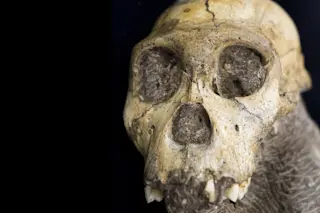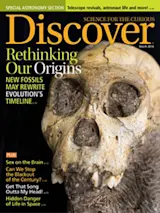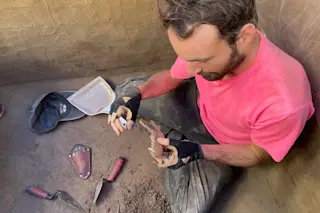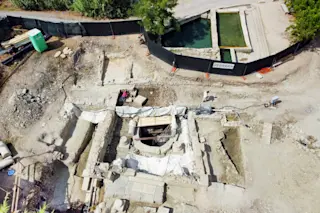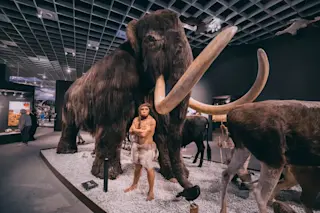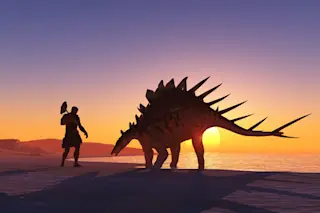If you want to explore our origin story, keep an eye out for the white stinkwood trees. That, at least, is what paleoanthropologist Christine Steininger says as we push our way up a gentle incline covered in waist-tall, brown and green grasses near Maropeng, a town about 45 minutes from Johannesburg, South Africa.
The land here is arid and open, except for hardy stinkwood and wild olive trees, which cling to existence in small patches. Their survival depends on putting down roots deep enough to sup on what little water collects in scattered depressions and crevices — the same spots where the fossils of our earliest ancestors have been found.
Indeed, at the first strand of trees is a fissure so thick with fossils that they protrude from the breccia, a type of conglomerate rock, in cartoonlike abundance. There’s enough material here for generations of scientists to excavate, says Steininger. ...


